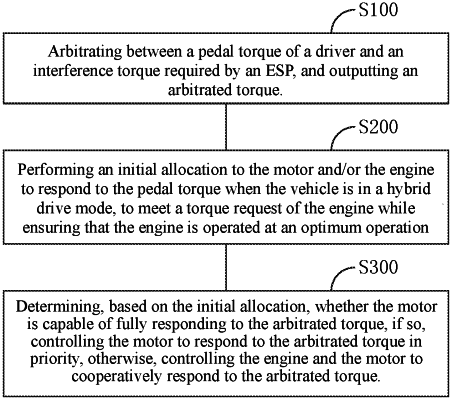| CPC B60W 20/10 (2013.01) [B60W 10/06 (2013.01); B60W 10/08 (2013.01); B60W 30/02 (2013.01); B60W 2510/083 (2013.01); B60W 2540/10 (2013.01); B60W 2710/0666 (2013.01); B60W 2710/083 (2013.01); B60W 2720/40 (2013.01)] | 17 Claims |

|
1. A method for controlling an interference torque of a vehicle, applied to a new energy vehicle comprising an electric motor and an engine, the method comprising:
arbitrating between a pedal torque of a driver and an interference torque required by an electronic stability program, and outputting an arbitrated torque;
performing an initial allocation on the electric motor and/or the engine in response to the pedal torque when the vehicle is in a hybrid drive mode, to meet a torque request of the engine while ensuring that the engine is operated at an optimum operation point; and
determining, based on the initial allocation, whether the electric motor is capable of fully responding to the arbitrated torque, controlling the electric motor to respond to the arbitrated torque in priority when it is determined that the electric motor is capable of fully responding to the arbitrated torque, and controlling the engine and the electric motor to cooperatively respond to the arbitrated torque when it is determined that the electric motor is incapable of fully responding to the arbitrated torque.
|